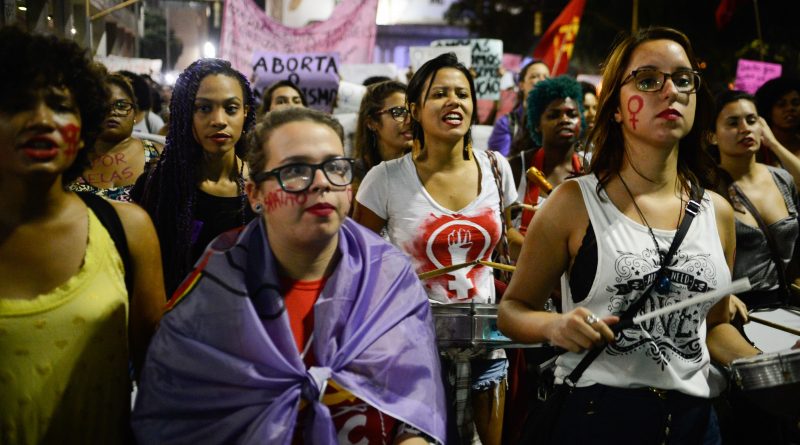Focus on Feminism: Brazil
Casey Hatchimonji
Web Editor
In an attempt to stop an ongoing cycle of violence against women, former Brazilian President Dilma Rousseff, took the step to become nation number 16 in Latin America to pass a law addressing femicide in Brazil. The new law, which reinforced Rousseff’s zero-tolerance stance towards gender-inequality, criminalizes “the intentional killing of females because they are females.” The effort to reduce femicide marked a critical step in the fight towards gender equality. However, since the passing of this law in March of 2015, femicide in Brazil has reached an all-time high in 2109, reports The Brazilian Report.
Despite the efforts of Rousseff and her female compatriots, femicide continues to rise in Brazil. According to Global Citizen, four women are murdered daily in Brazil, due to their gender. The issue, however, is not secluded to Brazil. According to UN News, Latin America has the world’s highest rates of femicide. Lending itself to this statistic is the growing number of femicides in Brazil. Approximately 40 percent of gender-based murders in Latin America occur in Brazil, reports Global Citizen. When speaking on the issue earlier this year, Pope Francis described femicide as a “plague” on his native continent, Reuters reports.
The Inter-American Commission on Human Rights (IACHR), the leading human rights organization in Latin America, expressed their concerns in a press release issued in February 2019. According to the same press release, there were 126 gender-based murders and 67 attempted murders within the first two months of 2019.
Many in Brazil and the global community fear that the increasing rate of femicide will reverse the social changes that Brazilian women have been fighting for. According to IACHR, femicide is “symptomatic” of a greater pattern of gender violence and it is a result of “sexist values deeply rooted in Brazilian society.” In a society where femicide is occurring at rapid rates, the impunity with which gender-based violence is viewed, reveals a greater obstacle in the fight for gender equality.
Despite the high levels of gender-based violence in Brazil, gender equality has been prevalent in the fight for social justice. According to Young Enough Ambition, women’s rights organizations in Brazil are some of the most effective in Latin America. Over the past one hundred years, women in Brazil have made great strides in their fight for gender equality. In 1932, Brazilian women gained the right to vote, and in 1988 the Brazilian constitution was changed to grant women the same legal rights as men.
While women legally share the same rights as men, gender inequality still prevails in Brazil. According to Human Rights Watch , more women receive college educations as opposed to men. However, in Brazil 56 percent of women are in the workforce, compared the 78 percent of men. Human Rights Watch also reports that women get paid 23 percent less than their male counterparts. Gender inequality also remains an issue in Brazil’s political sphere, as females make up nearly half of the electorate, yet, only 11 percent of Brazil’s 594-member Congress is female.
In 2011, Dilma Rousseff became the first female president in Brazil. For many, this represented a turning point in greater gender equality. Rousseff’s presidency was marked by scandal and she faced great opposition, even among female constituents. Rousseff was subsequently impeached in 2016. Many viewed her impeachment as discriminatory and sexist. During her impeachment, hundreds of thousands of women across Brazil marched in protest. According to The Guardian, more women started to identify as feminists and in Brazil and Google searches for feminism grew by 86 percent. During this time female activism in Brazil also found a new platform online, with young girls taking to social media to voice their complaints.
Protests by female activists in Brazil continued when Rousseff’s successor, Michel Temer, took office. Within the first year of his presidency, Temer cut funding from social programs and appointed Fatima Pelaes as Secretariat of Policies for Women, who opposed the legalization and decriminalization of abortion.
Brazil’s current president Jair Bolsonaro has taken similar steps as his predecessor, in reversing gender equality. Bolsonaro’s presidency has been marred by criticism for misogynistic comments made throughout his political career. Most notably, is the comment he made in 2003 to fellow congress member Maria do Rosário, in which he described her as unworthy of rape, reports The Guardian.
Female activists are continuing to take to the streets in protest of Bolsonaro. However, he has left the female population in Brazil divided. According to a poll taken a month before the 2018 presidential election, 44 percent of women were expected to vote for Bolsonaro, reports Foreign Affairs. Bolsonaro’s short time in office has already seen some of the highest rates of femicide in Brazil. It has also seen the death of Marielle Franco, a Brazilian politician, feminist, and human rights activist, as she was murdered, execution-style, in March 2019. She has become the new face of feminist and social movements throughout Brazil.
Feminist and social movements have not only been reinvigorated by Bolsonaro’s regime, but also by the murder of Franco. It is the unfortunate nature of Franco’s death and the death of countless other Brazilian women that has banned women together during such a polarizing time in Brazil.



